
Singapore, a bustling city-state in Southeast Asia, is renowned for its economic prowess, multicultural society, and strategic location at the crossroads of major global trade routes. Founded as a British trading post by Sir Stamford Raffles in 1819, Singapore quickly grew into a vital commercial hub due to its deep harbor and strategic position along the Straits of Malacca.
Singapore’s history is a tapestry of diverse influences. Before British colonization, it was part of the ancient Srivijaya and Majapahit empires and later the Sultanate of Johor. The island’s population has always been a mix of Malay, Chinese, Indian, and other ethnic groups, contributing to its rich cultural heritage.
During World War II, Singapore fell to Japanese forces, marking a dark chapter in its history. After the war, it returned to British rule, but the desire for self-governance grew. Singapore briefly joined Malaysia in 1963 but became independent on August 9, 1965.
Since its independence, Singapore has transformed from a developing port city into one of the world’s most advanced economies. It is known for its efficient government, strong rule of law, and vibrant economy. Today, it is a global financial center, a major tourist destination, and a symbol of modernity and innovation.
How To Get There
By Air
Singapore Changi Airport

Singapore Changi Airport is a major global hub, seamlessly connecting Singapore to the rest of the world. As one of the busiest and most well-connected airports, it serves as a crucial gateway between Asia and other continents. Here’s how Changi is connected to the world:
Extensive Flight Network:
- Global Reach: Changi Airport is connected to over 400 cities in more than 100 countries, with direct flights to major destinations across Asia, Europe, North America, the Middle East, Africa, and Oceania. Airlines like Singapore Airlines, Emirates, Qatar Airways, and numerous others operate regular flights, making it a central hub for international travel.
- Frequent Flights: With over 7,000 weekly flights, Changi offers frequent connections to key cities around the globe. Whether you’re flying to a major metropolis or a remote destination, there’s likely a convenient flight from Changi.
Regional and International Hubs:
- Asian Gateway: As a strategic gateway to Southeast Asia, Changi is a crucial stop for travelers exploring the region. It’s well-connected to nearby countries like Malaysia, Indonesia, Thailand, and beyond, making it easy to reach numerous destinations within a few hours.
- Long-Haul Connectivity: Changi’s state-of-the-art facilities and services make it a preferred hub for long-haul flights, offering smooth connections between continents. Passengers can easily transit through Changi en route to their final destinations, thanks to the airport’s efficient design and amenities.
World-Class Airlines:
- Home to Singapore Airlines: As the home base for Singapore Airlines, one of the world’s most respected airlines, Changi is renowned for its quality service and passenger experience. Additionally, several other international carriers operate out of Changi, contributing to its status as a top global airport.
Transit-Friendly Services:
- Convenient Transfers: Changi is designed with travelers in mind, offering quick and easy transfers between flights. Passengers can enjoy the airport’s many amenities, from shopping and dining to relaxation zones while waiting for connecting flights.
Jewel – Singapore
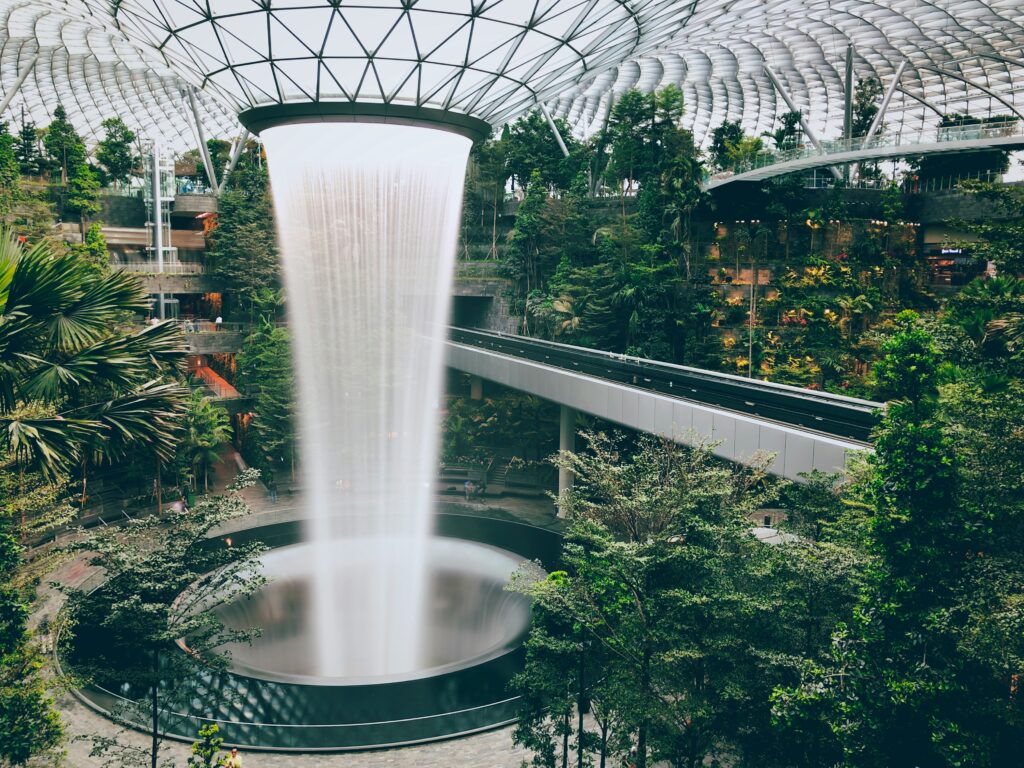
Welcome to Singapore Changi Airport, where the fun begins long before you leave the terminal! Often dubbed the “world’s best airport,” Changi is not just an entry point into the Lion City—it’s a destination. Imagine arriving at an airport where your biggest dilemma isn’t navigating security, but deciding whether to explore a rooftop sunflower garden, marvel at the world’s tallest indoor waterfall, or indulge in a shopping spree that could rival any downtown mall.
Changi is where layovers transform into mini-holidays. Need to stretch your legs after a long flight? Stroll through the Butterfly Garden, home to over a thousand fluttering beauties. Or maybe you’re feeling lucky? Try your hand at the free arcade games or catch a movie at one of the airport’s two 24-hour cinemas—no tickets required! Kids and adults alike can burn off some energy at the family-friendly playgrounds or get lost in the world of interactive art installations scattered throughout the terminals.
Hungry? Changi Airport is a foodie’s paradise, offering a smorgasbord of global cuisines and local delights. From Singaporean classics like laksa and chicken rice to gourmet treats from around the world, your taste buds are in for a treat. And for those with a sweet tooth, don’t miss the dessert spots serving everything from artisanal chocolates to freshly made kaya toast.
But the crown jewel of Changi is, of course, Jewel. This multi-story complex is where nature meets entertainment, featuring the stunning Rain Vortex—a 40-meter-tall indoor waterfall surrounded by lush greenery. It’s the perfect place to unwind, shop, or snap that perfect Instagram shot.
So whether you’re passing through or staying a while, Singapore Changi Airport turns the ordinary into the extraordinary. Here, travel is less about the destination and more about the journey—and trust us, this is one journey you won’t want to rush!
Book and Save with this Jewel Changi Airport Attraction Ticket in Singapore:
Klook.comBy Ferry

Getting to Singapore by ferry offers a scenic and leisurely alternative to flying, especially if you’re traveling from nearby islands or neighboring countries. Here’s how you can make the trip:
Routes and Departure Points:
- From Indonesia:
- Batam and Bintan Islands: Ferries frequently run between Singapore and these popular Indonesian islands. Batam is about 45 minutes away, and Bintan takes roughly 1 to 2 hours, depending on the ferry type. These ferries are operated by companies like Bintan Resort Ferries and Sindo Ferry.
- From Malaysia:
- Desaru and Tanjung Belungkor: Ferry services operate between Singapore and these locations on the Malaysian Peninsula. The journey from Desaru takes about 90 minutes, making it a convenient option for those traveling from Johor or other parts of Malaysia.
Arrival in Singapore:
- Ferry Terminals:
- HarbourFront Centre: Located near the central business district, this terminal is the main entry point for ferries arriving from Batam, Bintan, and other destinations. It’s well-connected to Singapore’s public transportation network, with direct access to the HarbourFront MRT station, buses, and taxis.
- Tanah Merah Ferry Terminal: This terminal is primarily used for ferries from Bintan and the Riau Islands. It’s about 20 minutes from Changi Airport and can be easily accessed by taxi or bus.
Getting Around
Getting from Changi Airport to Singapore’s city center and around the country is easy and convenient, with several options to suit different preferences and budgets. Here’s how you can make the trip:
1. MRT (Mass Rapid Transit)
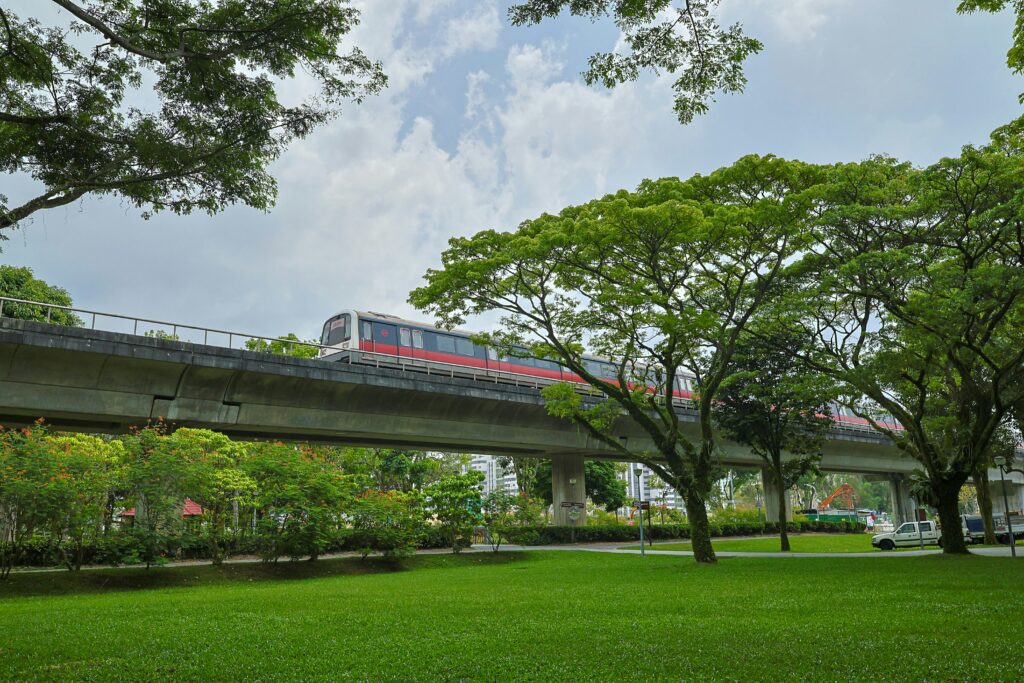
- Convenient and Affordable: The MRT is one of the most popular ways to reach the city. The airport is directly connected to the MRT network via the Changi Airport Station (located in Terminals 2 and 3). You can take the East-West Line and transfer to other lines depending on your destination.
- Travel Time: The journey to the city center (e.g., Raffles Place or City Hall) takes about 30 minutes. Trains are frequent, running from around 5:30 AM to midnight.
- Cost: The fare is typically around SGD 2.
Please visit https://www.smrt.com.sg/public-transport/ for more information.

2. Airport Shuttle
- Shared Ride: The airport shuttle service offers a shared ride to most hotels in the city. It’s a good balance between convenience and cost, especially if you’re traveling with luggage.
- Travel Time: Depending on traffic and the number of stops, the journey can take 25 to 45 minutes.
- Cost: The shuttle costs around SGD 9 per adult and SGD 6 per child.
3. Taxi
- Direct and Fast: Taxis are readily available at the designated taxi stands at all terminals. They offer a direct and hassle-free ride to your destination.
- Travel Time: Depending on traffic, the trip to the city center typically takes 20 to 30 minutes.
- Cost: The fare ranges from SGD 20 to SGD 40, depending on the time of day and traffic conditions. There may be additional surcharges for airport pickups, late-night rides, or peak hours.
4. Private Hire (Grab, Gojek, etc.)
- App-Based Rides: Ride-hailing services like Grab and Gojek are widely used in Singapore. You can book a car through the app upon arrival.
- Travel Time: Similar to taxis, it takes about 20 to 30 minutes to reach the city center.
- Cost: Prices vary based on demand, but they are generally comparable to taxi fares.
5. Public Bus
- Budget-Friendly: Public buses offer the most economical way to get to the city, though they might be less convenient if you have a lot of luggage.
- Travel Time: Depending on your route, the journey can take 60 to 90 minutes.
- Cost: Bus fares are around SGD 2, payable by EZ-Link card or exact cash.
6. Car Rental
- Flexible Option: If you prefer driving, car rental services are available at the airport. This option gives you the flexibility to explore Singapore at your own pace.
- Cost: Rental rates vary depending on the car type and rental duration.
Where To Stay
Singapore offers a diverse range of hotels catering to various preferences and budgets. Here’s an overview of the types of accommodations tourists can find in the city-state:
1. Luxury Hotels
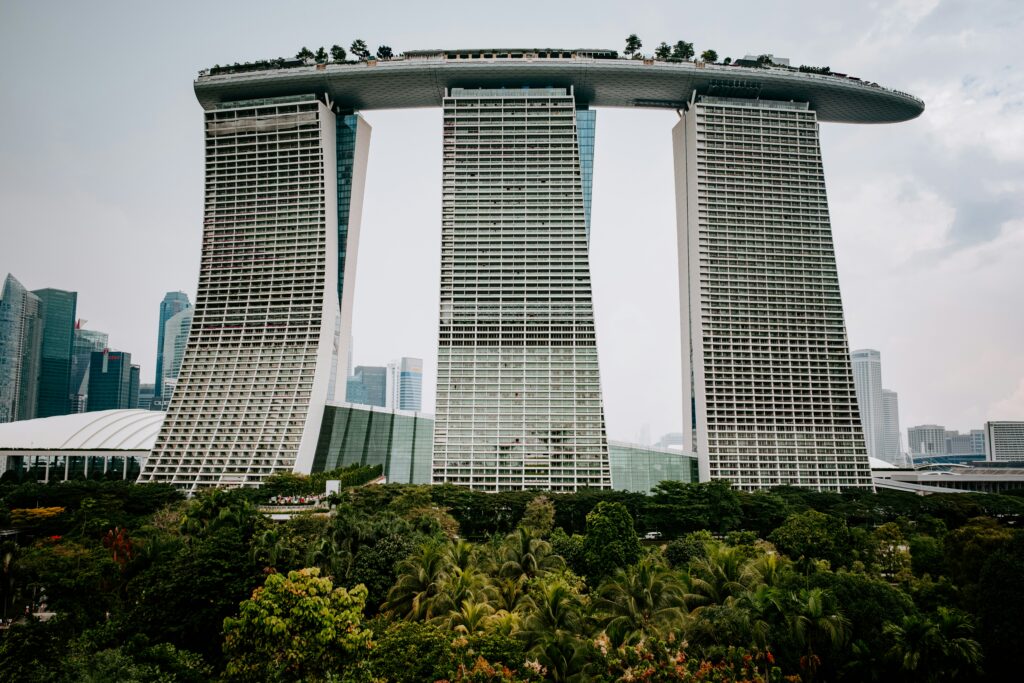
Singapore is home to some of the world’s most prestigious luxury hotels, often located in prime areas such as Marina Bay, Orchard Road, and Sentosa Island. These hotels offer top-notch amenities, including fine dining restaurants, spas, and stunning city or waterfront views. Examples include Marina Bay Sands, Raffles Hotel, and The Fullerton Hotel.
2. Boutique Hotels
For travelers seeking a more personalized and unique experience, Singapore has an array of boutique hotels. These establishments are often housed in restored heritage buildings or designed with distinct themes, offering a blend of modern comfort and local charm. Areas like Chinatown, Kampong Glam, and Tiong Bahru are popular spots for boutique hotels.
3. Mid-Range Hotels

Mid-range hotels are ideal for tourists who want a comfortable stay without splurging. These hotels offer essential amenities such as Wi-Fi, breakfast, and sometimes a swimming pool or fitness center. Many are conveniently located near public transportation hubs, making it easy to explore the city. Popular mid-range options include the Holiday Inn, Ibis, and V Hotel.
4. Budget Hotels
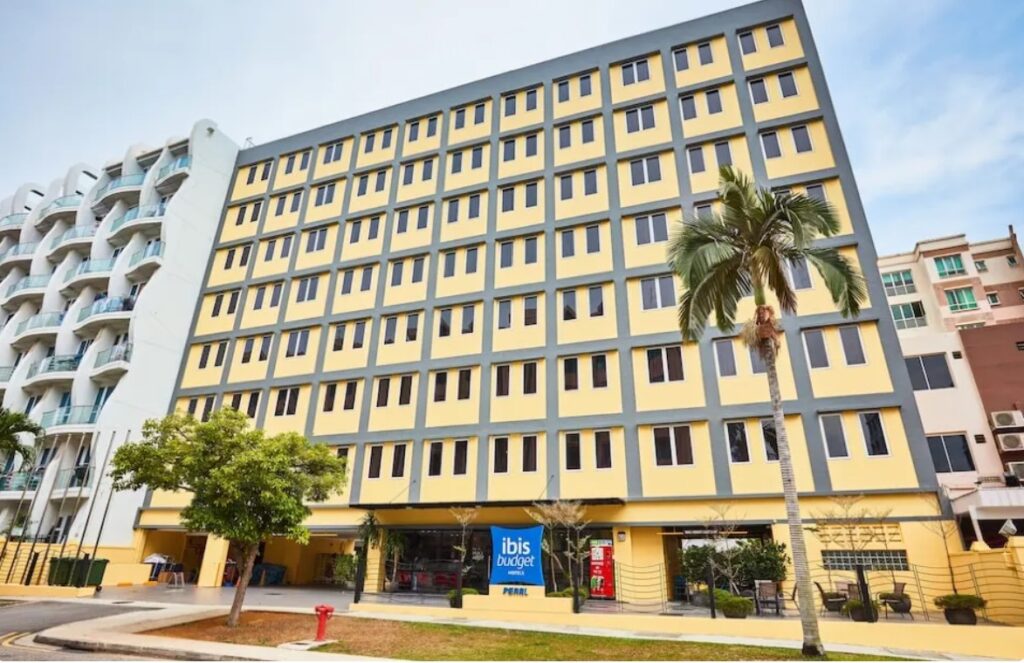
For budget-conscious travelers, Singapore has a selection of budget hotels that provide basic accommodation at affordable rates. These hotels are typically smaller and offer fewer amenities but are clean and comfortable. They are often located in areas like Little India, Geylang, and Bugis.
5. Hostels
Hostels are a popular choice for backpackers and solo travelers. They offer dormitory-style rooms or private rooms with shared facilities, creating a social environment for guests. Singapore’s hostels are known for being safe and well-maintained, with many located in vibrant neighborhoods like Clarke Quay and Chinatown.
6. Serviced Apartments
For those planning an extended stay or traveling with family, serviced apartments are a convenient option. These accommodations offer the comforts of home, including kitchen facilities, laundry services, and living spaces. They are typically located in residential areas but still close to city attractions.
7. Heritage Hotels

Singapore has a rich history, and some hotels have embraced this by preserving and restoring historic buildings. Heritage hotels allow guests to experience the city’s past while enjoying modern comforts. These hotels often feature colonial architecture and are found in districts like the Civic District and Katong.
8. Resort Hotels
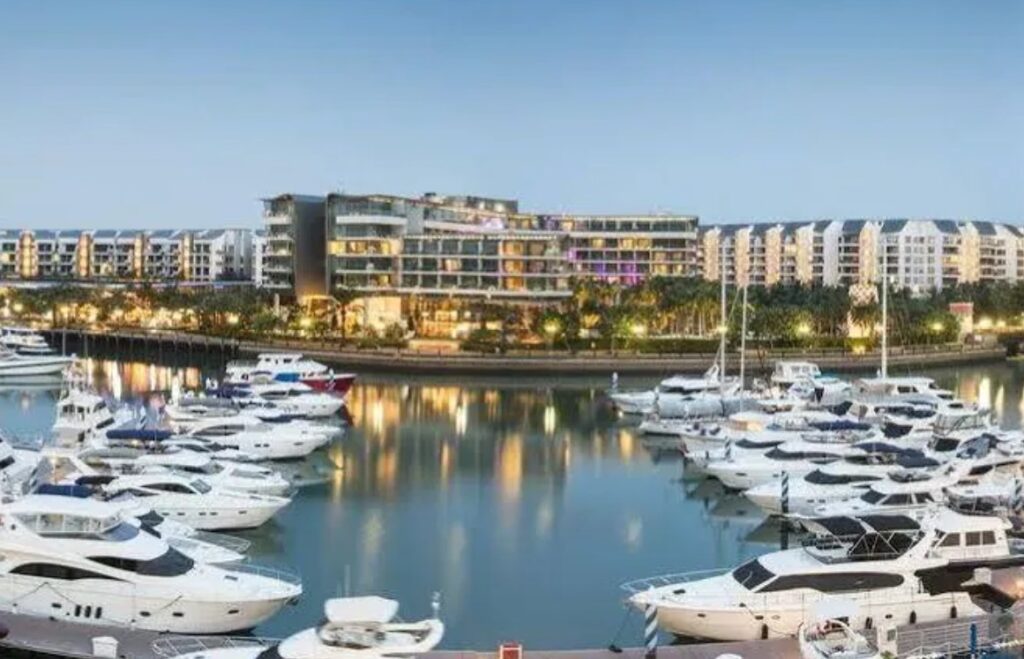
Located on Sentosa Island and other scenic areas, resort hotels offer a retreat from the urban hustle. These hotels provide luxurious amenities, including private beaches, golf courses, and family-friendly attractions. They are ideal for tourists looking to combine leisure with their Singapore experience.
9. Capsule Hotels
A newer trend in Singapore, capsule hotels offer a futuristic and space-efficient option for solo travelers. Each guest has their own small pod, equipped with a bed, charging ports, and sometimes a small TV. These hotels are a great option for travelers who prioritize location and affordability over space.
10. Eco-Friendly Hotels
As sustainability becomes more important, eco-friendly hotels are gaining popularity in Singapore. These hotels incorporate green practices such as energy efficiency, waste reduction, and sustainable materials. They are ideal for environmentally conscious travelers.
Each type of hotel in Singapore offers a unique experience, catering to different needs and preferences. Whether you’re looking for luxury or budget-friendly options, Singapore has something to offer every traveler.
Book and Save with this link:
Singapore NETS FlashPay Travel Card
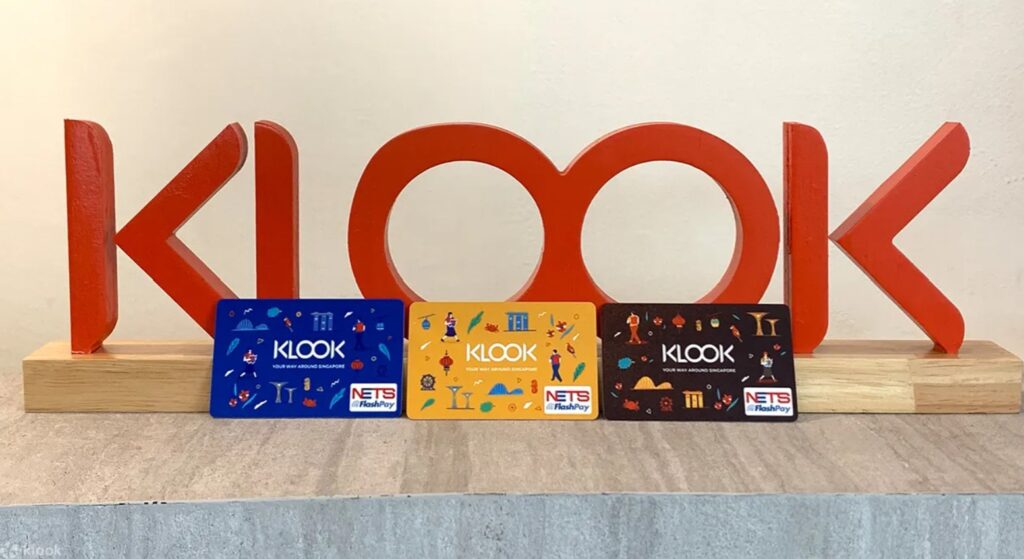
The Singapore NETS FlashPay Travel Card is an essential tool for anyone navigating the vibrant and dynamic city-state of Singapore. Designed with convenience in mind, this stored-value card simplifies the process of getting around, offering a seamless payment method for public transport, including buses, MRT, and LRT systems. No more fumbling for change or dealing with multiple cards—the NETS FlashPay card consolidates your transport needs into one easy-to-use solution.
Beyond its primary function as a transportation card, the NETS FlashPay Travel Card is a versatile payment option accepted at thousands of retail outlets, food courts, and even parking lots across Singapore. This multi-purpose functionality makes it an ideal companion for both residents and tourists. Whether you’re grabbing a quick bite at a hawker center, shopping at a local market, or paying for parking, the NETS FlashPay card ensures that transactions are quick, secure, and hassle-free.
Top-ups are straightforward, with numerous options available, including NETS Self-Service Stations, ATMs, convenience stores, and mobile banking apps. This flexibility means that you can easily add value to your card whenever and wherever it’s most convenient for you. The card also provides peace of mind with its robust security features, ensuring that your funds are safe even if the card is lost or stolen.
In addition to the convenience it offers, the NETS FlashPay Travel Card frequently comes with exclusive promotions and discounts, adding extra value to your purchases and travels. It’s not just a payment method; it’s a smart choice for anyone looking to make the most out of their time in Singapore. With the NETS FlashPay Travel Card, you can enjoy seamless travel and everyday transactions, all with one simple, reliable tool in your wallet.
Book and Save with this Klook Singapore NETS FlashPay Travel Card
Klook.comData Sim Card and E-sim

When visiting Singapore, staying connected is essential, and local telecom providers Singtel, M1, and StarHub offer convenient data eSIM solutions tailored for tourists. These eSIMs provide reliable, high-speed data without the need for physical SIM cards, ensuring that travelers can seamlessly access the internet, use navigation apps, and stay in touch with loved ones during their stay.
Singtel Tourist eSIM
Singtel, Singapore’s leading telecom provider, offers a tourist eSIM with attractive data plans tailored for short-term visitors. This eSIM provides extensive coverage across Singapore, ensuring a stable and fast internet connection. Singtel’s eSIMs are available for purchase online through their official website or via the Singtel HiApp, making it easy to set up before arriving in Singapore. Upon arrival, travelers can also visit Singtel stores at Changi Airport or retail outlets across the city.
M1 Tourist eSIM
M1 is another major telecom provider offering data eSIM options for tourists. M1’s eSIMs come with generous data allowances, suitable for heavy internet users who need reliable service during their trip. These eSIMs can be purchased online through M1’s website or app, allowing tourists to activate the service as soon as they land. M1 also has physical stores at Changi Airport and in various locations around Singapore, where travelers can get assistance and purchase eSIMs.
StarHub Tourist eSIM
StarHub’s tourist eSIM offers an easy way for visitors to enjoy uninterrupted data services throughout Singapore. Known for its strong network coverage and competitive pricing, StarHub provides eSIM options that can be easily purchased online. Travelers can download and activate their eSIM instantly, or they can visit StarHub retail stores at Changi Airport or across Singapore to get their eSIM in person.
All three providers ensure that tourists can enjoy the convenience of a digital eSIM, which can be activated immediately upon arrival in Singapore. These eSIMs are available for purchase online or at Changi Airport, making it easy for travelers to stay connected from the moment they arrive.
Book and Save with these Service Providers:
Klook.comFood Culture In Singapore

Singapore’s food culture is a vibrant tapestry woven from a rich blend of culinary traditions, reflecting the nation’s diverse ethnic makeup and its historical role as a global trading hub. This small city-state boasts a culinary scene that is both deeply rooted in tradition and constantly evolving, making it a paradise for food lovers.
A Melting Pot of Flavors
Singapore’s food culture is a true melting pot, drawing influences from the Chinese, Malay, Indian, and Peranakan communities that have shaped the nation’s history. Each group has contributed its flavors, ingredients, and cooking techniques, resulting in a cuisine that is uniquely Singaporean. Whether it’s the rich and aromatic spices of Indian dishes, the bold and savory flavors of Chinese cuisine, or the fragrant herbs and coconut-infused ingredients of Malay cooking, Singaporean food offers a world of flavors in every bite.
Iconic Dishes
Among the many iconic dishes that define Singapore’s food culture, Hainanese Chicken Rice stands out as a national favorite. This deceptively simple dish, consisting of tender poached chicken served with fragrant rice and accompanied by chili sauce and ginger paste, is a must-try for anyone visiting Singapore. Another beloved dish is Chili Crab, a spicy and tangy seafood delight that showcases the nation’s love for bold flavors.
Laksa, a spicy noodle soup with a rich coconut milk base, exemplifies the Peranakan influence in Singaporean cuisine, blending Chinese and Malay flavors into a harmonious whole. Nasi Lemak, a fragrant rice dish cooked in coconut milk and served with an array of sides like fried fish, sambal chili, and peanuts, is another classic that captures the essence of Malay cuisine in Singapore.
Hawker Culture
At the heart of Singapore’s food scene is its hawker culture, a unique dining experience that has earned a place on UNESCO’s Representative List of the Intangible Cultural Heritage of Humanity. Hawker centers are open-air complexes housing dozens of stalls, each specializing in a particular dish or type of cuisine. These centers offer affordable, high-quality food, making them a favorite among locals and tourists alike. Whether you’re savoring a bowl of Char Kway Teow (stir-fried flat noodles), enjoying a plate of Satay (grilled skewers of meat served with peanut sauce), or indulging in a sweet treat like Chendol (a dessert made with coconut milk, palm sugar, and green jelly), the hawker center experience is quintessentially Singaporean.
A Foodie’s Paradise
Singapore’s food culture is not just about traditional dishes; it’s also a hub for innovation and fusion cuisine. The city’s fine dining scene has gained international acclaim, with Michelin-starred restaurants offering modern takes on classic dishes. This blend of old and new, traditional and contemporary, makes Singapore a foodie’s paradise where every meal is an adventure.
In Singapore, food is more than just sustenance; it’s a reflection of the nation’s multicultural identity, a source of pride, and a way of life. Whether you’re dining at a humble hawker stall or an upscale restaurant, the food in Singapore tells a story—one of history, community, and the unifying power of a shared meal.
Related Posts:
15 Must-Try Local Foods In Singapore
15 Must-Visit Places In Singapore
Disclosure: This post contains affiliate links. If you buy something through them, I will receive a small commission at no additional cost to you. Thank you for your support.